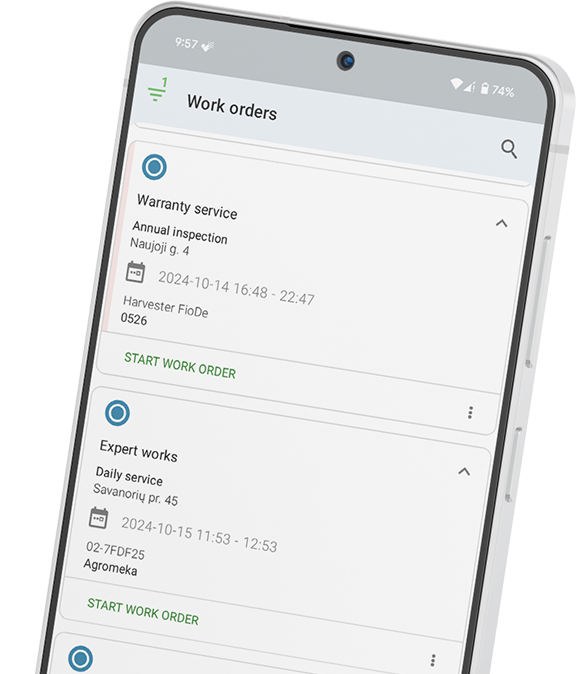Bring simplicity to your field service operations.
Our list of integrations is updated frequently. Explore each integration in its own separate page for more information.
Workforce management platforms and apps are an asset to businesses with frontline workers and office staff. They provide a multitude of features that help facilitate communication between teams, manage tasks, review schedules, optimize routes, etc.
These features, however, do not exhaust the capabilities of workforce management solutions. They can also provide data and analytics, real-time tracking, note-taking, and digital signing capabilities.
These solutions can be integrated as early as needed, as long as the business has a sizable client base. The end goal is to create a centralized experience for on-premise teams, management, and office staff access from anywhere and at any time.
A workforce app or a workforce management app is software for mobile phones and other devices. Workforce apps are used to streamline task management and communication between staff.
They are most commonly used by companies that have field service (or on-site) technicians and office workers. A workforce app becomes a real-time lifeline between staff, who have access to the necessary data, and the frontline workers, who have to act upon that data.
Workforce apps might not necessarily be just mobile applications. Various workforce management platforms are deployed for several devices and operating systems. Most of these workforce tools are primarily integrated to computers or servers. A workforce app, in the mobile sense of the word, is simply one of the ways to take advantage of the benefits.
An overarching name for these workforce tools and apps is a field service management (FSM) solution. These solutions usually have a multitude of features that may include a mobile app. Once integrated into a business’s daily operations, these workforce tools are intended to boost productivity without creating more overhead.
Various workforce management platforms achieve these goals with different features. There are, however, similarities across workforce management solutions. Most of them provide mobile capability, a way to manage and review schedules, and document digitization.
Since these solutions are meant to provide a seamless workforce experience, every feature outlined above may be considered a necessity. A workforce app does much of the same as it’s an extension of the field service management solution.
They integrate these features in a similar fashion to well-known project management solutions such as JIRA. These workforce tools could even be considered as a mix of a CRM (customer relationship management) and a project management solution.
The end goal of these solutions is to place tasks, customer relationships, and service management all under one system. Both frontline teams and management staff can then access the same database through any computer or mobile device, allowing both to communicate, edit, and retrieve data in real-time.
Just like any other software, developers of workforce tools try to outdo each other. There’s a whole swath of features that are supposed to provide a better-centralized experience for productivity purposes. Outside of the essential feature set outlined above, we recommend looking for:
While building a centralized experience is the primary goal for workforce tools, they have the opportunity to provide much more. In essence, a seamless workforce experience can only be implemented if all affected parties can use the platform to communicate and use data with ease.
While workforce management platforms can benefit a wide variety of companies within various industries, not every business is ready for these tools. Building a seamless workforce experience becomes necessary for those who have the scale necessary.
Once, however, several on-site teams and a sizable customer base is acquired, workforce tools become increasingly vital. Since workforce management platforms are used to optimize schedules, routes, and task performance, the efficiency of these tools increases as the company expands.
Thus, while various workforce management platforms can be implemented at different stages, workforce tools should be in consideration once stability is acquired. In other words, workforce tools are important for those who have established themselves, at least in some small part, in the industry.
Building a seamless workforce experience should be the end goal of all field service businesses. While it may seem ephemeral at first, achieving such a goal is highly recommended as it helps companies optimize revenue streams and reduce time wasted doing menial tasks.
Additionally, workforce management platforms provide a centralized experience for all employees involved. Ease-of-access and the ability to perform tasks better improves the wellbeing of all parties involved and results in better customer service.

Our list of integrations is updated frequently. Explore each integration in its own separate page for more information.

Link copied!